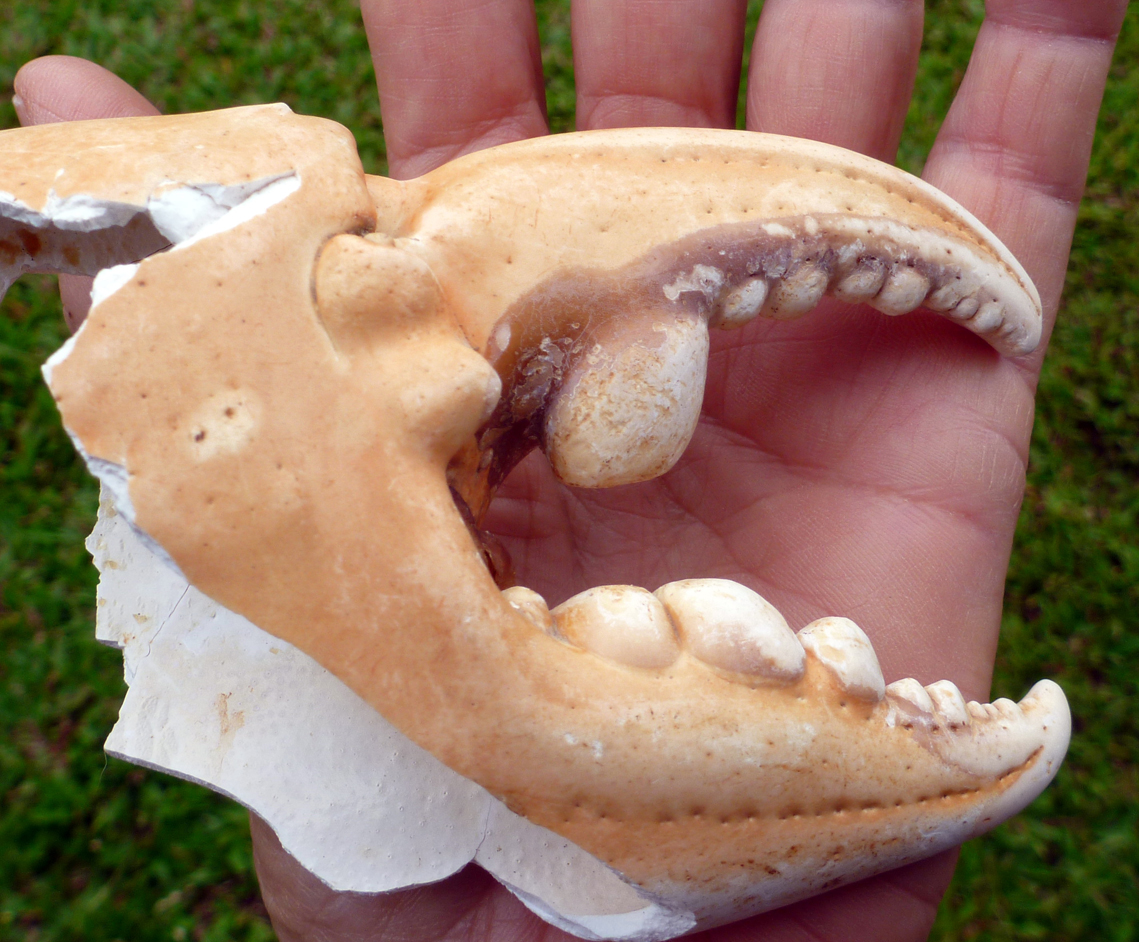Monday, October 1, 2012

A Samoan crab claw.
I love the idea of eating aliens, but a Sept. 19 article in this paper about Samoan crabs (“Invite the invaders to dinner”) left me with questions. What, I wondered, are crabs from Samoa doing in Hawaii?
Thriving, for starters. The introduced Samoan crab (Scylla serrata) has done so well here that the state regulates the fishery. You can’t spear male Samoan crabs or keep one with a shell under 6 inches across. And forget females. The state prohibits taking or harming females of any size. To sell Samoan crabs in Hawaii, a fisher must have a license.
Samoan crabs aren’t exactly invaders. People brought the edible crabs from Samoa to Kaneohe Bay in 1926. From then until 1935, commercial fishery hopefuls released 98 crabs on Oahu, Hawaii island and Molokai. With females producing 2 million eggs at a time, and releasing them offshore, it didn’t take long for the crabs to get around. They are now found on all the main islands.
The Samoan crab is a large, active, aggressive carnivore that eats snails, shrimp, worms and other invertebrates. The state record for a female Samoan crab is 4.5 pounds, caught in Pearl Harbor in 2005. The largest male was caught in Windward Oahu (no specific place named) in 2009. It weighed 7.4 pounds.
Still, if the species needs regulation to survive, it’s on shaky ground. And native ground. Because it competes with other marine species for food and space, the Samoan crab’s impacts on native species can’t be good. Local research is lacking, however, so the true effects are unknown.
In any case, since Hawaii residents love to fish for and eat Samoan crabs, they’re here to stay.
Samoan crabs released in Hawaii came from Samoa, but the crab’s natural range is enormous. The species is native throughout the Indian and Pacific oceans, thriving in the mud-covered bottoms of brackish water areas from Tahiti to South Africa, north to Okinawa and south to New Zealand.
Because they are easy to raise and taste good, people have transplanted them just about everywhere there is warm, brackish, mud-bottomed water, from the Gulf of Mexico to the Red Sea. They are also known as mud crabs or mangrove crabs.
When I learned the other names for the species, I hurried to my living room to fetch a giant crab claw I found several years ago on an Australian beach. When I had asked locals about the claw, one said it was a mud crab, another called it a mangrove crab. Those terms meant nothing to me at the time, but the mighty claw still held a place in my collection of cool stuff I found on a beach. Now I know it’s also called a Samoan crab claw.
If I see that name, or mud or mangrove crab, on a menu, I’ll do my part for the environment and eat it.
©2012 Susan Scott